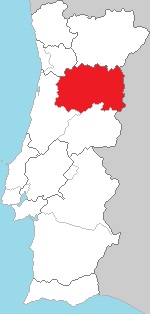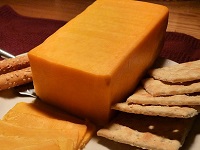Douro Tinto (Portugal)
Douro Tinto is a red wine from the Douro valley in Portugal.
More than 40 different grapes can be used to produce Douro Tinto.
Common grapes: Touriga Franca, Touriga Nacional, Tinta Amarela, Tinta Roriz, Tinta Barroca, and Tinto Cão.
Douro Tinto Flavors
Red Berries. Cherry. Dark Berries. Black Currant. Black Olives. Spices. Mokka. Licorice.
Strawberry |
Raspberry |
Black Cherry |
Black Currant |
Blackberry |
Mocca |
Pepper |
Licorice |
Flavors from Maturation and Aging
Oak |
Vanilla |
Toast |
Smoke |
Douro Tinto Profile
Douro Tinto wines are often medium bodied with good fruit and acidity:
| SUGAR: | Dry (3 g/l) |
| BODY: | Medium |
| TANNINS: | Medium |
| FRUIT: | Medium Plus |
| ACIDITY: | Medium - High |
| ALCOHOL: | 13-14% ABV |
| Serving temperature: 16-17°C (61-63°F) | |
Douro Tinto Food Pairing
Douro Tinto pairs best with Grilled, Braised, or Roasted Meat.
Tapas |
Stew |
Mushroom |
Hamburger |
Chicken |
Duck |
Rabbit |
Pork |
Lamb |
Veal |
Wild Boar |
Venison |
Excellent Pairings
Beef Stew. Mushrooms.
Barbeque. Hamburger. Meatloaf.
Grilled Beef. Grilled Lamb. Grilled Chicken.
Caça (Game). Veado (Venison).
Javali (Wild Boar). Coelho (Rabbit).
Cheeses
Strong Cheese. Smoked Cheese.
Portuguese Specialities
Cabrito Assado (Roasted Goat).
Bacalao com Natas (Bacalao with Potatoes).
The Ideal Glass for Douro Tinto
The Bordeaux Glass was designed for enjoying fuller-bodied, tannic red wines.

|
They are taller than other red wine glasses, and has a slimmer bowl.
The slimmer bowl directs the wine to the back of your mouth for a maximum taste. The size also allows the bouquet of the wine to develop, smooth out rough edges, play down tannins, and allow the wine to achieve balance. |
Douro Tinto Cheese Pairing
If You Like Douro Tinto
You Might Also Like:
The Douro Wine Region

The Douro region is the oldest wine region in the world (1756) and is classified as a World Heritage by UNESCO.
Famous for Port Wine, Douro also produces quality red wines (Douro Tinto) tasting from light Burgund to rich Bordeaux.
Black Grapes | White Grapes |

Touriga Nacional |

|
Port Wines | Red Wines |

|

|
Douro Climate

The Corgo Viaduct carries A4 over the Corgo river.
In general, Douro has a warm continental climate, but the climate is not uniform:
Baixo Corgo (below Corgo) in the west, has the mildest climate and produces the lightest wines.
Cima Corgo (over Corgo) is centered around the village of Pinhão, and has the majority of the famous Quintas (Estates).
Douro Superior in the east, is the hottest and driest regions. It goes all the way to the Spanish border. It has cold winters and hot summers and is a source of many wines of good quality.
Soil |
|
The soil in Douro is very rocky. Terraced vineyards (schist bedrocks) are common. Port vineyards are planted in silt layers on clay-schist spread over schist rocks. Table wines are planted on granite-based soils. |

Portuguese Wine Classifications
Vinho (de Mesa)
Vinho is the new classification for table wine.
Table wine was previously called "Vinho de Mesa" (Table Wine).
Vinho translates to Wine. Mesa translates to Table.
Vinho Regional
Before the IGP and DOP regulations were invented by EU, Portugal was originally divided into 14 "Regional Wine" areas and the wines were labeled "Vinho Regional".
Many wine producers still use the Vinho Regional denomination because the new rules are more stringent, or because they have chosen to use grape varieties or volumes that are not permitted in the IGP or DOP.
IGP
IGP (Indicação Geográfica Protegida) is the next quality level, previously called "Vinho Regional".
The IGP classification has more stringent rules for cultivation and production than vinho, and the wines must have a regional origin.
DOP / DOC
DOP (Denominação de Origem Protegida), previously called DOC (Denominação de Origem Controlada) is the highest Portuguese quality level.
DOP requires a limited geographical area and strict rules for both cultivation and production.










